
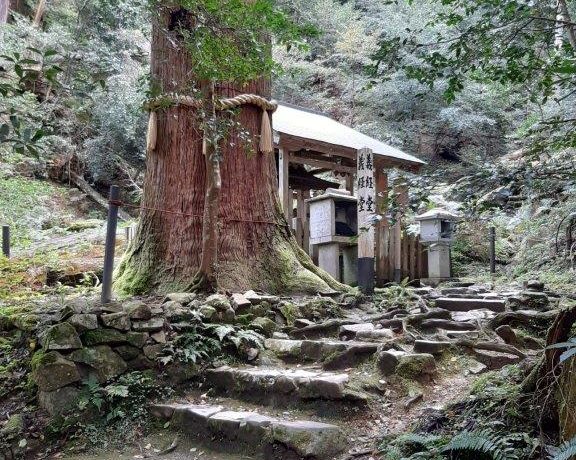
When we last saw each other, we were standing at the peak of Mount Kurama, full of power and drive having prayed at the Sonten Trinity’s power spot at Kurama-Dera. Despite the beautiful views and atmosphere, home is calling, so it’s time to begin our downward journey, and to discover more of the sprawling mountain complex. While it’s possible to simply go back the way you came, taking the time to go down the other side of the mountain is the recommended route.
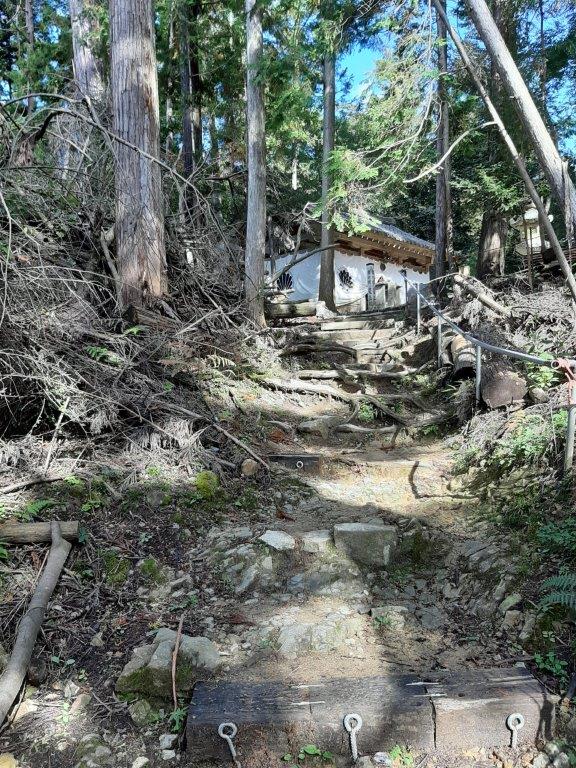
The wilder downward route
While the route up is quite wide and has many sections of paved stone and beautiful stairs, the way down is much wilder. Narrow paths snake down the mountainside, and tree root stairs often replace stone ones. The nature worshipping side of Kurama-dera is much more apparent this side, with forest shrines amongst the trees. Unfortunately, one of the large sacred trees has fallen down, and following the ‘tree root path’ towards it leads only to disappointment.
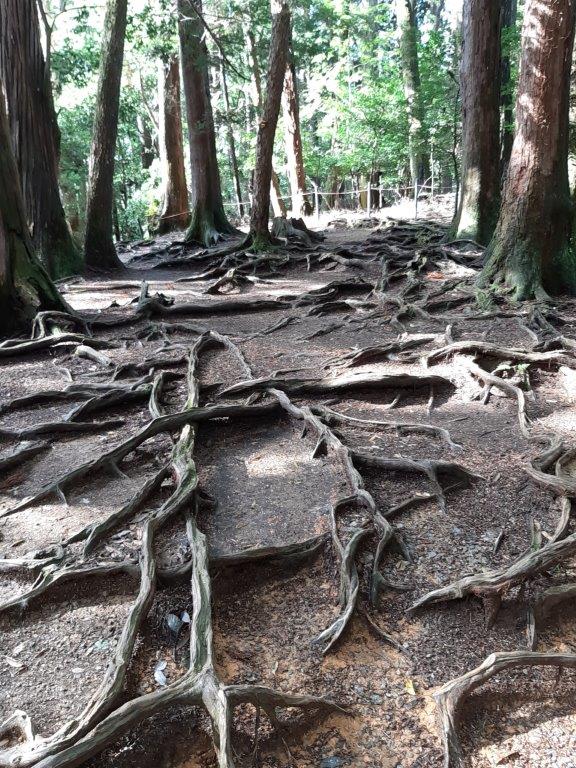
The tree root path
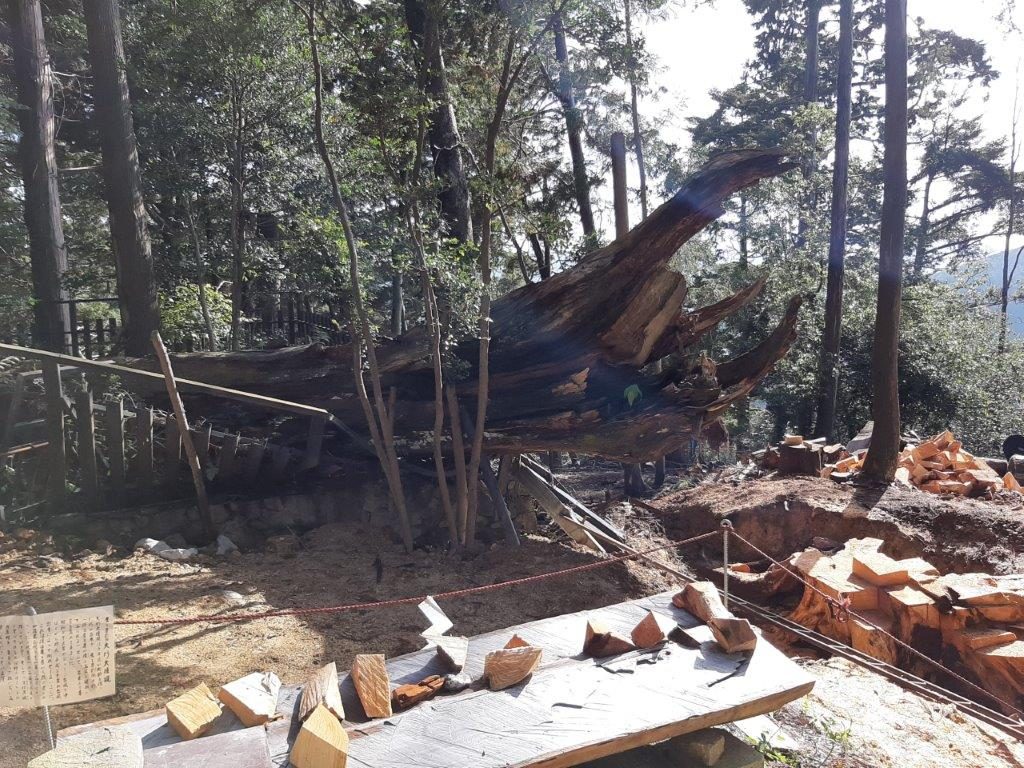
The unfortunate fate of the sacred tree.
Walking down the mountain feels like a much farther journey than going up, but the architectural sites and atmosphere stop it from being overly long. Two forest temples in particular are a big highlight of the trip.
The first one, named Sōjō-ga-dani Fudō-dō is a small wooden subtemple and enshrines a statue of Fudō, one of the myōō – the Buddhist Kings of Light. While the statue is not always on display, the temple in the small woodland clearing feels like something out of a Studio Ghibli film. If you find yourself here alone, then it’s very easy to imagine a benign mountain spirit watching over you.
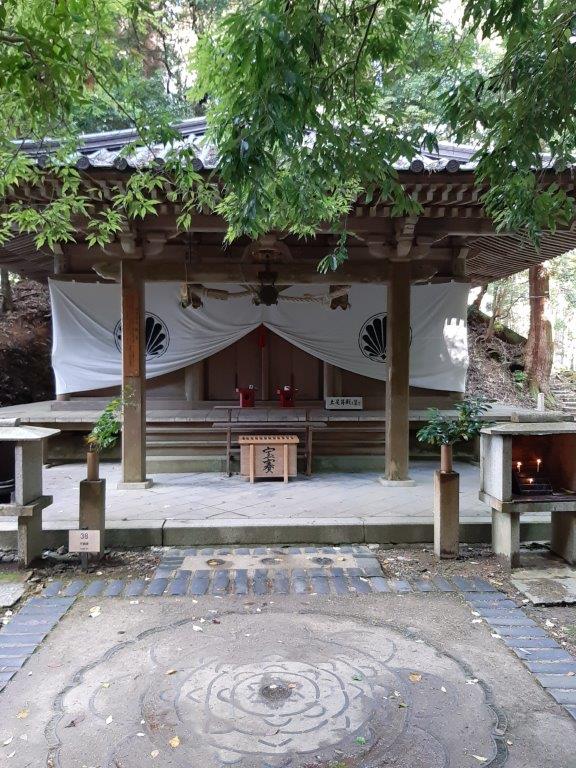
Sōjō-ga-dani Fudō-dō
Similarly, the Okuno-in Mao-den, the hall of the spirit of the earth, which is located a little further down the mountain, has a similar atmosphere about it. This subtemple enshrines Mao-san, and again while it will likely be closed, only seeing the outer building is still a nice experience.
Historically, little is known about these subtemples’ foundings, but they are interesting highlights that break up the downward journey.
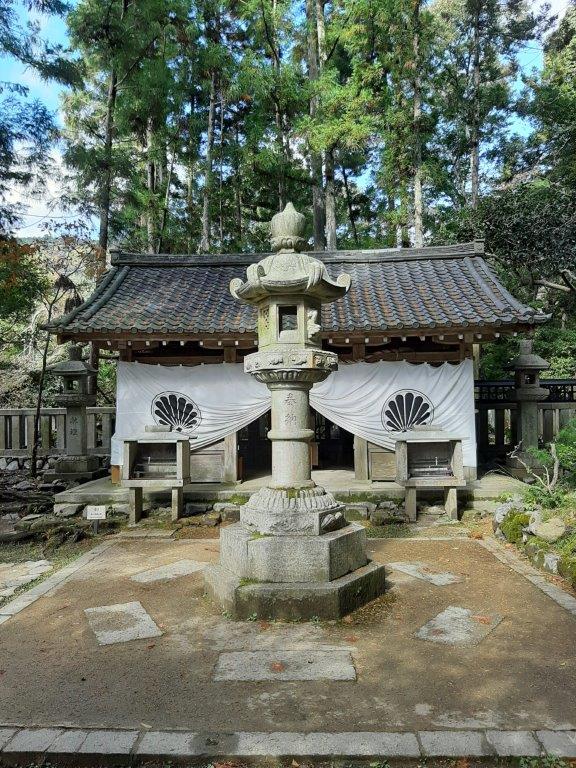
Okuno-in Mao-den
Although the steep paths and steps demand your close attention on the descent, it’s worth keeping an eye on your surroundings too. From wildlife, to hidden statues, paths and strange contraptions, Kurama has many beautiful and quirky things to see. At the bottom of the mountain, after crossing the river, you emerge into Kibune town, but don’t fret, this is not quite the end of our journey.
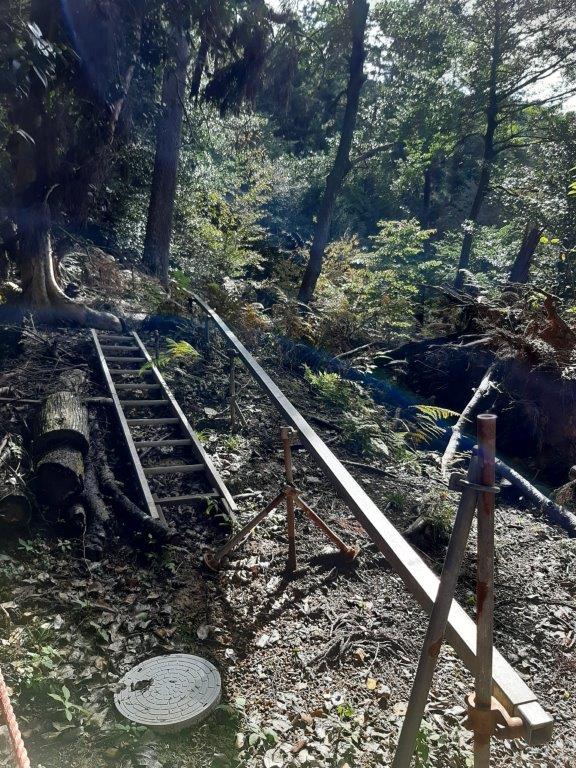
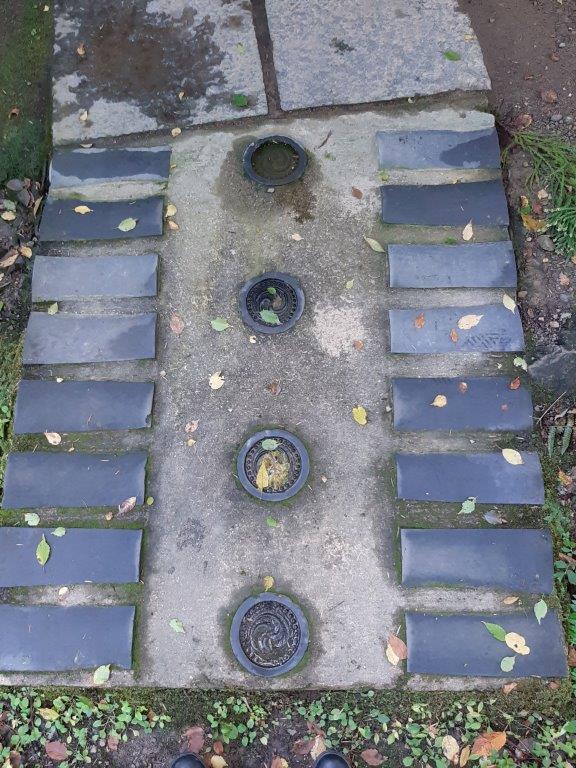
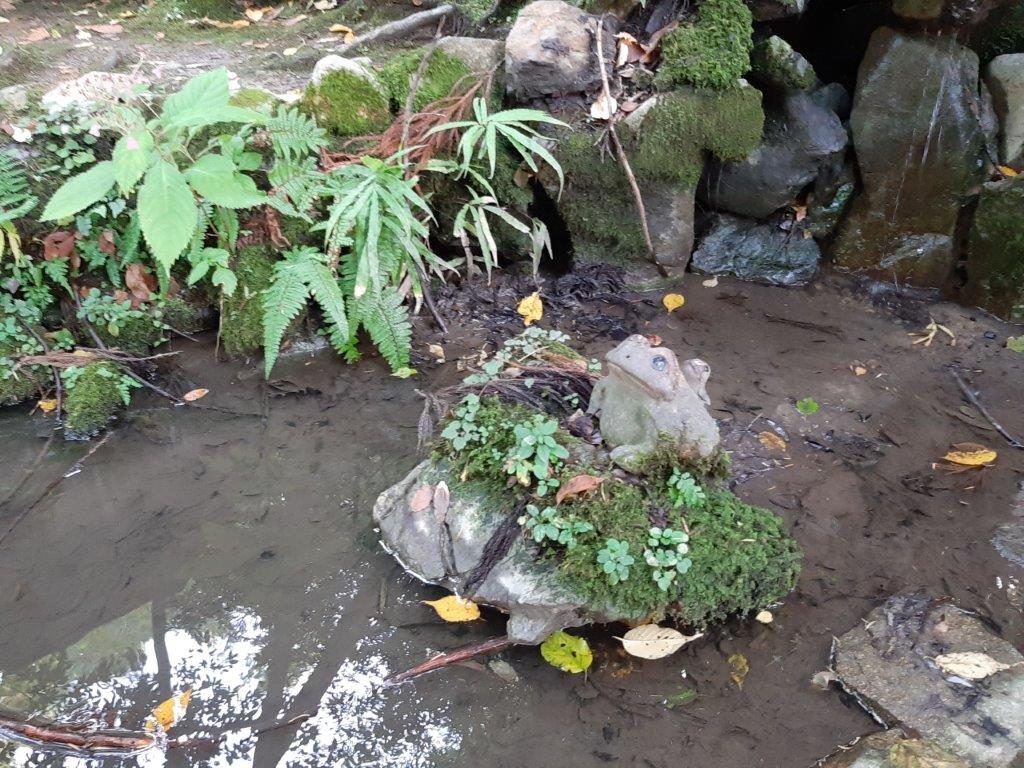
Post tracks, frog statues and hidden ‘kamon’ paths are just a few of the things to keep an eye out for on the downward journey.
Despite the beautiful scenery and atmosphere of the mountain, the main goal of the downward journey is really Kifune Shrine, another complex in the neighbouring valley to Kurama. Like Kurama-dera, Kifune shrine is spread out along the mountain, but this time, a tarmac road connects all and the slopes are very gentle.
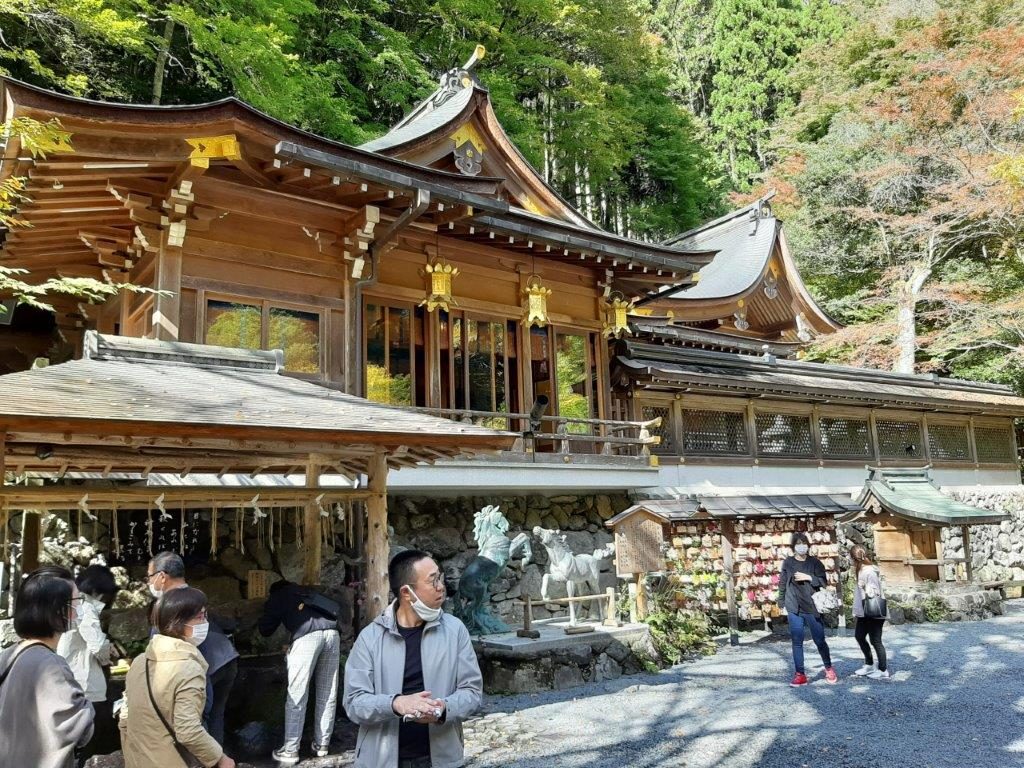
Like many Japanese shrines and temples, the exact date and conditions of the shrine’s founding are unknown. However, records show that reconstruction work was carried out over 1300 years ago during the reign of Emperor Tenmu, suggesting that construction would have taken place several decades before this. According to legend, the founding occurred on the day of the ox, in the month of the ox in the year of the ox, when a god came down to Earth and settled at the base of Mt. Kibune in order to bring peace and safety to the land.
The god enshrined there is named Takaokami-no-Kami, (sometimes also named Kuraokami) a water god born from the fire god Kagatsuchi. The temple has remained popular over its lifetime due to Takaokami’s role in preventing floods or droughts. Traditionally, black horses were offered to the god to bring rain during times of drought, and white or red horses were offered to stop rainfall during times of flooding. Takaokami was also believed to offer protection during epidemics, making now a rather apt time to visit.
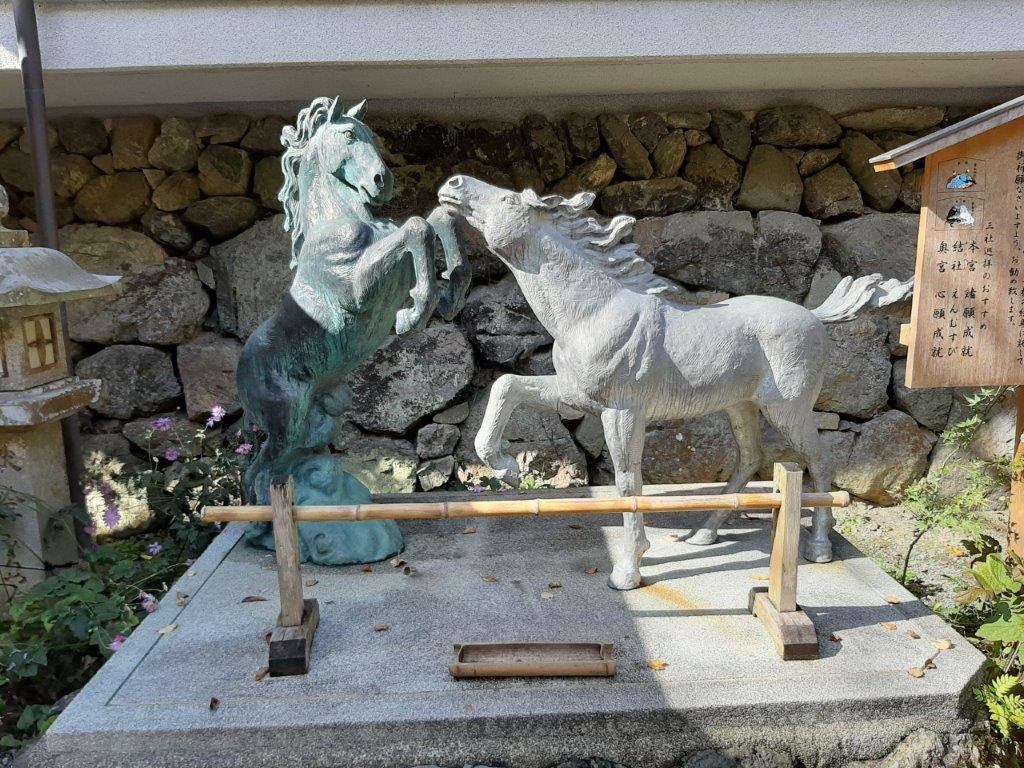
Different horses for different courses.
The water link at the shrine can also be seen in the amazing fortunes that can be obtained there. Visitors buy a piece of white paper, and then submerge it into the shrines inner stream. As if by magic, the words and fortune appear. It’s very novel and a lot of fun for something that is usually very trivial. The vermillion lanturn lined stairs are another highlight of the shrine, and their traditional air contrasts slightly with other modern looking parts of the heavily reconstructed shrine.
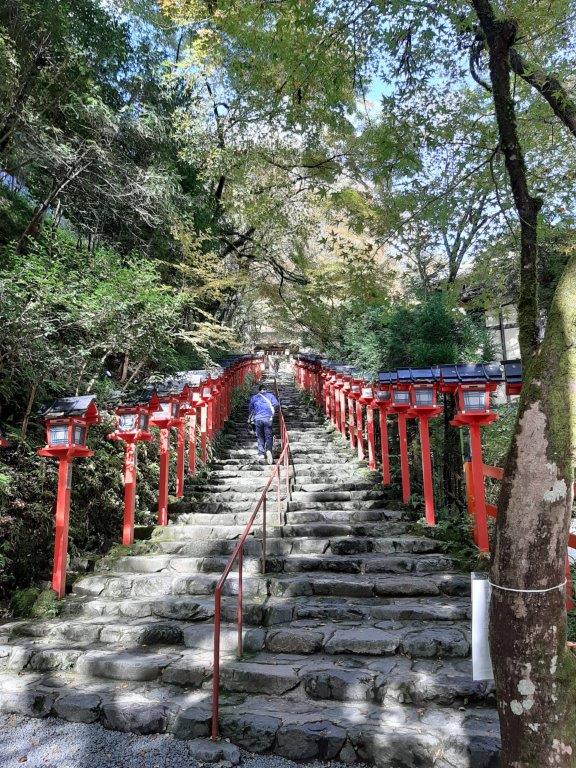
More stairs! The entrance to Kibune shrine.
Continuing up the road leads to the other parts of Kibune shrine, including the inner sanctum. While not mind blowing, the simple wooden inner sanctum was built in a forest glade, and the surrounding trees make it a very peaceful and atmospheric shrine.
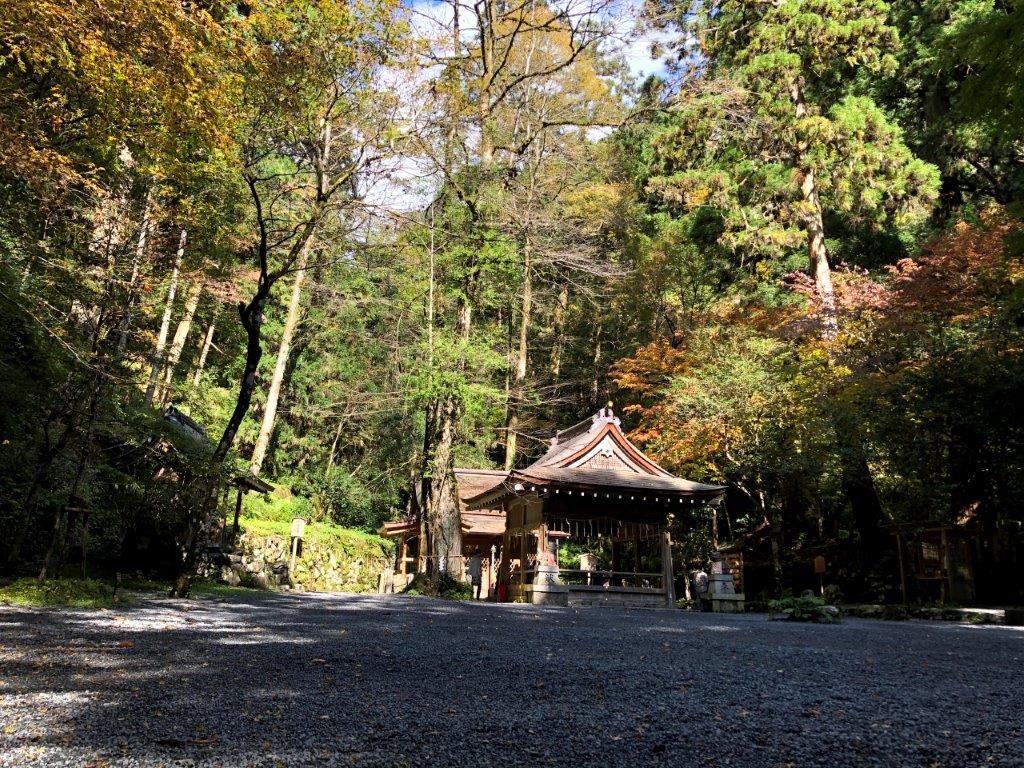
The Inner Sanctum
After taking your fill of Kibune, all that remains is to return to Kurama town and then on to Kyoto City proper. While some people walk the 2 kilometre road between the towns, there is no real reason to. The road is somewhat unremarkable and busses connect the towns anyway.
Despite saying that Kibune was the goal of the downward trip, it’s safe to say that the important thing is not the destination, but the journey itself. The hike from the peak of Mount Kurama to Kibune town is charming and atmospheric and the forest temples are a real highlight. It should also be noted that the reverse route, from Kibune to Kurama, is also possible, but not recommended except for those who are more fit and healthy.
Harry Hammond is an Englishman lost in Kyoto, with a passion for history and architecture. He loves finding the hidden stories and history behind both the famous and the unknown buildings that shape this beautiful city.